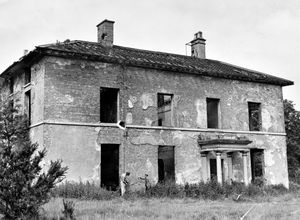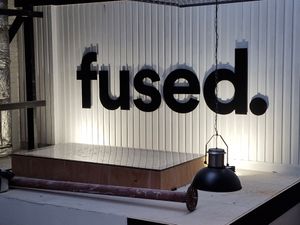Historic hall disappeared with a bang... or two
One last look...
Historic Bilbrook Hall is pictured here on the day before it was to disappear with a bang. Or rather, several bangs.

Its date with destiny was June 13, 1952. But maybe the demolition teams reflected later that it was not such a good idea to try to blow it up on a Friday the 13th, as the building unexpectedly proved a tough old nut.
Despite being a mere shell of what it once was, it resisted eight explosive charges without being reduced to a heap of brick and rubble. Since 1939 the hall and its grounds had been owned by M A Boswell (Contractors) Ltd of Wolverhampton, who wanted the building removed to make way for housing.
Because it was thought some of the walls were unsafe, it was decided to use explosive charges instead of men with pickaxes to level the building. In preparation for the explosions, nearby residents were warned to leave all their doors and windows open to spare them from blast damage.
After the first few small explosions some of them walked up to the hall to see how things were getting on. Not very well, as it turned out. They found most of the old building still standing for, after four small charges had gone off, there were only small holes in the walls to show for them.
Then the demolition squad tried a charge of gelignite about as thick as a man's arm and about as long as a hand. This bigger explosion sent out showers of brick dust and lumps of brick. When the dust cloud had cleared it was found that a section of the east wall about 15 feet across and stretching from ground to roof level had come down.
Three other small charges were tried in the west-facing wall, resulting in more small holes. Then another large charge was exploded – and still the wall stood. The demolition team dug in for a longer than expected assignment.
Presumably they eventually prevailed against the spirited defence, although information on the internet about "Bilbrook Hall," as it was described in contemporary reports, is more or less non-existent.
According to the Star's newspaper report of those 1952 events the hall had last been occupied in 1939 by the Loveridge family and was believed to date from between 1730 and 1750.
So where exactly was it?
There was a "Bilbrook House" which was a care home in Carter Avenue, Codsall, operated by Staffordshire County Council, but that has been demolished fairly recently.
Confusingly a dip in our files tells of a grand mansion called Bilbrook House which "was built for John Egginton of Oxley in 1805 and remained standing until the 1960s when it was demolished to make way for housing."
And then there is a memories site which talks of a "Codsall House" in Bilbrook which was owned by the Loveridge family "and stood where Orchard Lane estate is now."
Lastly we can throw into the mix Bilbrook Manor, which stood off Bilbrook Road, if only to dismiss it, as it looks entirely dissimilar in photographs.
"By the 1880s the house was known by this name and it was bought by Lt-Col Twentyman in the early 1900s. It was demolished after his death in 1945."
Bilbrook Manor was, according to a Staffordshire historic website, demolished in 1959.





